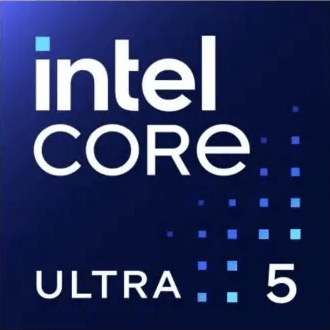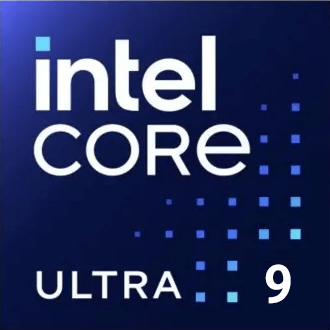Intel Processor N95 vs Intel Core i7 13700H
Hemos comparado dos CPU portátil 4 núcleos 0 Intel Processor N95 con 14 núcleos 2.4GHz Intel Core i7 13700H. Aprenderá cuál de los dos procesadores tiene un mejor rendimiento en las pruebas de referencia, especificaciones principales, consumo de energía y otros aspectos.
Principales Diferencias
Intel Processor N95 Ventajas de
Menor TDP (15W vs 45W)
Intel Core i7 13700H Ventajas de
Mejor rendimiento de tarjeta gráfica
Mayor especificación de memoria (6400 frente a 4800)
Ancho de banda de memoria mayor (89.6GB/s vs 38.4GB/s)
Nueva versión de PCIe (5.0 vs 3.0)
Tamaño de caché L3 más grande (24MB vs 6MB)
Puntuación
Prueba de rendimiento
Cinebench R23 Núcleo único
Intel Processor N95
914
Intel Core i7 13700H
+104%
1870
Cinebench R23 Multi Core
Intel Processor N95
2767
Intel Core i7 13700H
+536%
17612
Geekbench 6 Núcleo Individual
Intel Processor N95
1201
Intel Core i7 13700H
+89%
2279
Geekbench 6 Multi Core
Intel Processor N95
2901
Intel Core i7 13700H
+355%
13208
Cinebench 2024 Single-Core
Intel Processor N95
60
Intel Core i7 13700H
+75%
105
Cinebench 2024 Multi Core
Intel Processor N95
182
Intel Core i7 13700H
+356%
831
Blender
Intel Processor N95
36
Intel Core i7 13700H
+747%
305
Geekbench 5 Núcleo único
Intel Processor N95
798
Intel Core i7 13700H
+136%
1885
Geekbench 5 Multi Core
Intel Processor N95
2370
Intel Core i7 13700H
+458%
13242
Parámetros generales
ene 2023
Fecha lanzamiento
ene 2023
Intel
Fabricante
Intel
Portátil
Tipo
Portátil
x86-64
Conjunto instrucciones
x86-64
Alder Lake
Arquitectura núcleo
Raptor Lake
N95
Núm. procesador
i7-13700H
BGA-1264
Zócalo
BGA-1744
No
Gráficos integrados
No
-
-
-
Paquete
-
-
-
10 nm
Proceso Fabricación
10 nm
-
-
-
15 W
Consumo Energía
35 W
-
Máx. Consumo Turbo
115 W
105 °C
Temp. Máxima
100°C
-
-
-
-
-
-
-
-
-
-
-
-
-
-
-
Rendimiento CPU
-
Núcleos de rendimiento
6
-
Núcleos Rendimiento
12
-
Frec. Base Rendimiento
2.4 GHz
-
Frec. Turbo Rendimiento
5 GHz
4
Núcleos Eficientes
8
4
Hilos Eficientes
8
1.7 GHz
Frec. Base Eficiente
1.8 GHz
3.4 GHz
Frec. Turbo Eficiente
3.7 GHz
4
Total Núcleos
14
4
Total Hilos
20
100 MHz
Frec. Bus
100 MHz
17
Multiplicador
24x
-
-
-
96 K per core
Caché L1
80 K per core
2 MB shared
Caché L2
2 MB per core
6 MB shared
Caché L3
24 MB shared
No
Multip. Desbloqueado
No
-
-
-
-
-
-
-
-
-
-
-
-
-
Parámetros memoria
DDR5-4800,DDR4-3200,LPDDR5-4800
Tipos de memoria
DDR5-5200, DDR4-3200, LPDDR5-6400, LPDDR5x-6400, LPDDR4x-4267
16 GB
Tamaño máx. memoria
64 GB
1
Canales máx. memoria
2
38.4 GB/s
Ancho de banda máx.
89.6 GB/s
No
Soporte memoria ECC
No
Parámetros tarjeta gráfica
true
Gráficos integrados
true
350 MHz
Frecuencia base GPU
300 MHz
1200 MHz
Frecuencia máx. dinámica GPU
1500 MHz
128
Unidades shader
768
8
Unidades de textura
48
4
Unidades ROP
24
16
Unidades de ejecución
96
6-15
Consumo de energía
15 W
-
-
-
0.3 TFLOPS
Rendimiento gráfico
1.69 TFLOPS
Acelerador de IA
-
-
-
-
-
-
Varios
3.0
Versión PCIe
5.0
9
Carriles PCIe
28
-
-
-










